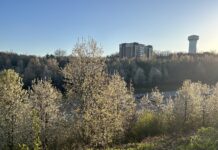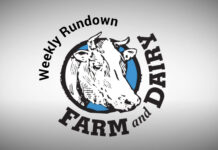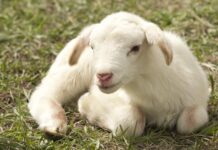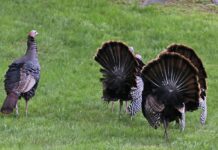By Heather Neikirk
Regenerative agricultural practices, particularly regenerative grazing, has garnered much attention in recent years.
Grazing lands represent about two-thirds of global land cover.
The massive global footprint coupled with its capability to sequester carbon long-term as a “sink” has given these lands significant consideration as a potential natural solution to specified climate change challenges — most notably, offsetting atmospheric carbon dioxide by “sinking” carbon in the soil for long periods of time, thereby mitigating greenhouse gas emissions.
To fully understand how regenerative ag practices work to mitigate climate change challenges, you have to understand soil carbon sequestration and why it’s important.
What it is
Soil carbon sequestration is the name given to the process of capturing CO2 from the atmosphere and “sequestering” or storing it in soil for a period of time. This process is just one of the ways that carbon is cycled between “stores” or “reservoirs.” Soil, water and the atmosphere comprise the three largest places that carbon can be stored or cycled.
Of the estimated 50,400 billion metric tons of carbon, about 5% is stored in the soil, 1.2% is stored in living organisms (plants and animals), 1.5% in the atmosphere (mainly as carbon dioxide and methane), 15% in fossil fuels and 77% in water (oceans), according to the published works of soil scientist and Ohio State University professor Rattan Lal.
Capturing carbon from the atmosphere occurs through plant photosynthesis and by the decomposition of biological organisms. It can also be returned to the atmosphere via microbial respiration.
The impact this has is dependent on the amount of time that the carbon remains in the soil before cycling off into the atmosphere. Several complex biological, physical and chemical components regulate both carbon capture and a soil’s ability to sequester it.
Types of soil carbon
Soil carbon exists in two forms: inorganic and organic. Soil organic carbon is the largest portion of organic matter. This form is of most interest as it most directly impacts the soil carbon sequestration process. It is also an important determinant of healthy soil function.
The science of soil organic carbon includes two pools: particulate organic matter (POM) and mineral associated organic matter (MAOM). POM is considered “vulnerable” as it exists in a more available form of carbon that is readily consumed by soil microbes.
MAOM is a “protected” form of carbon since it is strongly bonded with soil particles (i.e.clay). The association with clay particles makes it harder to decompose allowing it to remain stored in soil for longer periods of time.
The stability of carbon in the soil was previously believed to be regulated by carbon’s ability to resist decomposition, often referred to as chemical recalcitrance.
More recent research has shown that it is far more likely that soil organisms and the bonds between mineralized carbon and clay particles are the key factors in carbon stabilization and longevity in the soil.
Grazing
Grassland soils have shown that they are able to secure more of their carbon as MAOM, suggesting that these soils may have a larger portion of mineralized carbon and the potential to store more SOC in this more stable form.
Regenerative grazing whether on native, improved, annual or perennial pasturelands builds on the historic relationship between grassland ecosystems, ruminant animals and sustainable land stewardship. Dr. Allen Williams, sixth generation family farmer and founding partner of Understanding Ag, once described regenerative grazing as “grazing in a manner that allows us to be able to tap into the four ecosystem processes: to repair, rebuild, revitalize and restore ecosystem function.”
Land uses such as grazing and permanent land covers that retain carbon in the soil cause little soil disturbance, reducing carbon loss from valuable soil organic matter while adding decomposed organic materials from grasses and grazing livestock that feed soil microbial populations and add to soil organic matter over time.
Strategies
Below are a few of the most common strategies associated with regenerative grazing. These strategies also indirectly influence positive ecosystem services such as soil health and quality and soil carbon sequestration.
• Adaptive multi-paddock grazing/rotational grazing: Animal movement designed to mimic the patterns of wild herbivores across multiple paddocks created by subdividing existing pastures.
• Stocking rate:Matching the number of livestock grazed with land capacity.
• Animal movement: Frequent movement of animals to allow for recovery and regrowth and prevent damage in grazing areas. Rate will depend on animal species, type of pasture, stocking rate and weather.
• Fencing: Keep livestock where they need to be and control forage quality and utilization.
• Cover crops: Use to improve soil health and prevent erosion, reduce need for chemical inputs and build/maintain plant diversity.
• Diversify plant species: Provide a variety of palatable forage options to grazing livestock throughout the season.
Get involved
Interested in conducting on-farm research related to enhanced soil carbon farming as a climate solution on pastures and hayfields in Ohio? Visit https://agcrops.osu.edu/newsletter/corn-newsletter/2023-09/enhanced-soil-carbon-farming-climate-solution-pastures-and for more information.
(Heather Neikirk is the Ohio State University Extension educator for agriculture and natural resources in Stark County. She can be reached at nekirk.2@osu.edu or at 234-348-6145.)













